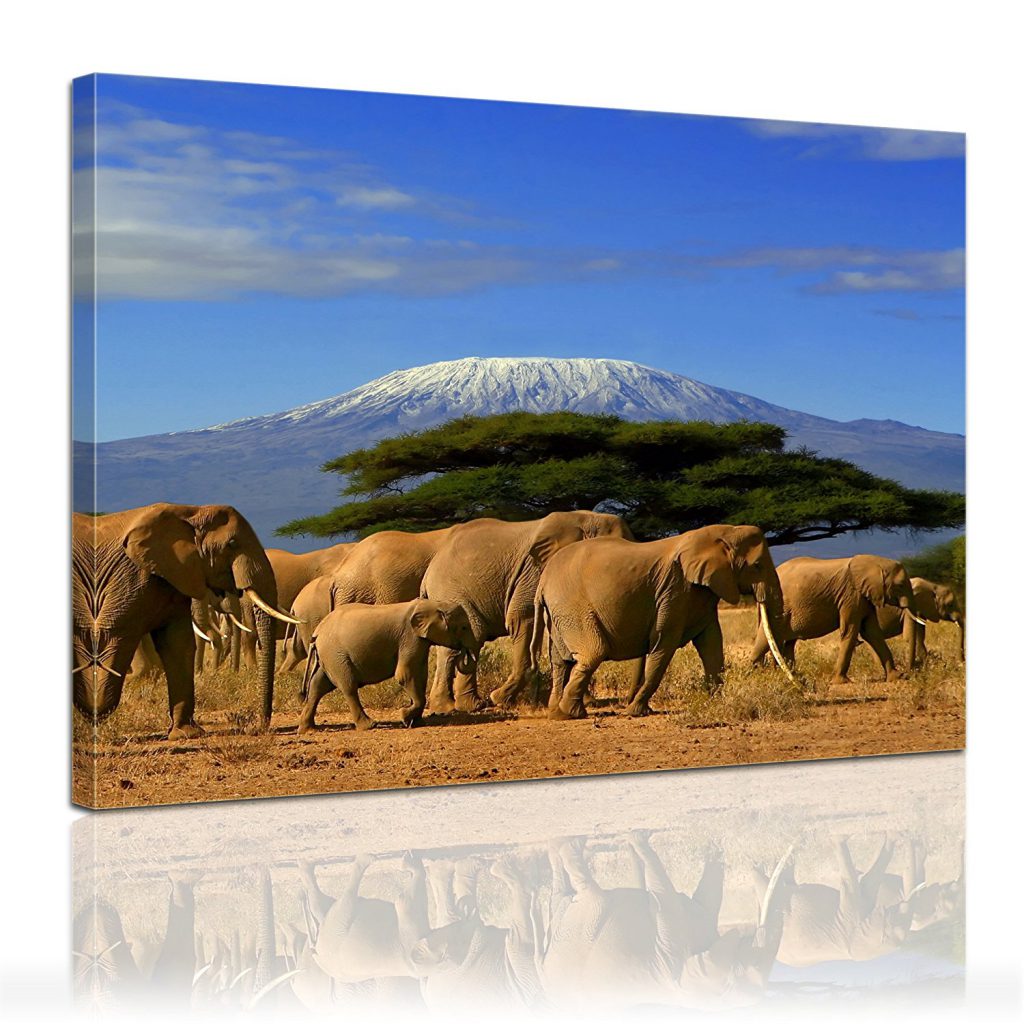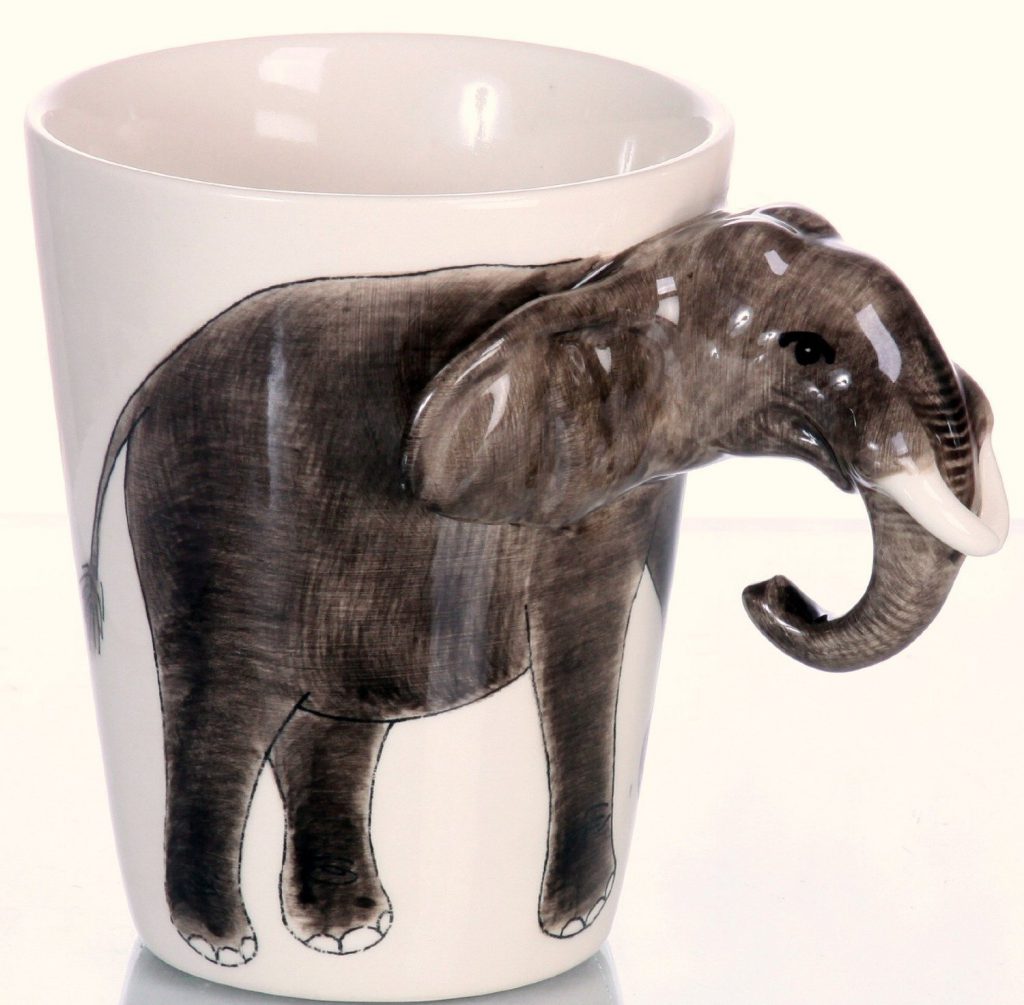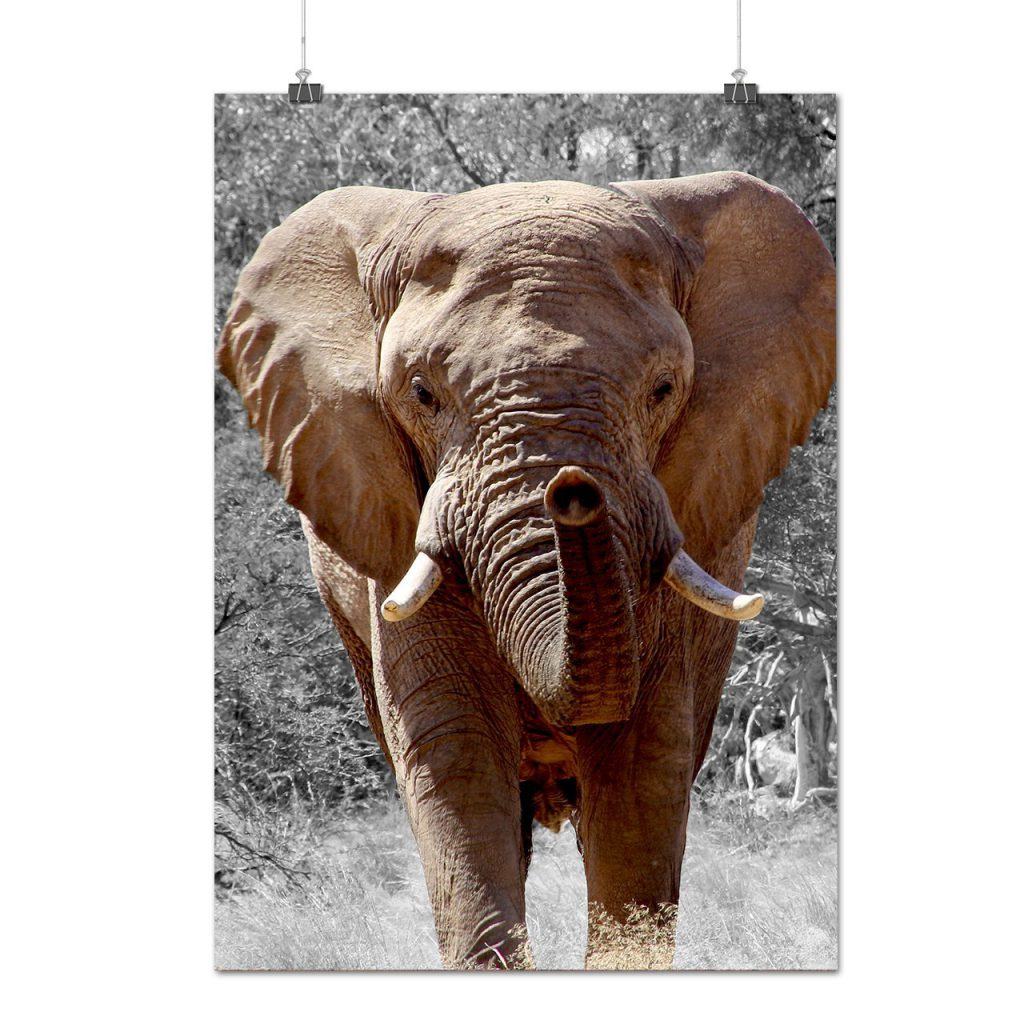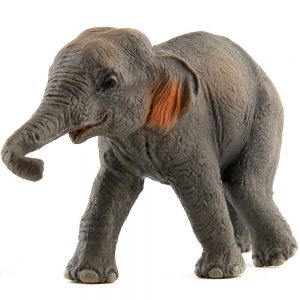Majestic Elephants
Category : Animal Kingdom

Weighing up to eight tons, elephants are the largest land animals on earth, they have astonishing strength and are gentle in nature,The elephant is so majestic that it has been considered as a vehicle for kings.
When Alexander the Great invaded India in 325 B.C. , he came to realise the symbolic might of the elephant. As he battled with King Porus ( King Puru from his actual name Purushottam = the noblest of all men ) and defeated him, Alexander himself faced a defeat of his own. This was as he encoutered Porus the person.
There are many stories. One of them is where Porus’ elephant displays his compassion for his master. At the famous battle of Hydaspes in July 326 B.C. , where Porus faced defeat from Alexander and injury from the numerous arrows, it was his elephant who saved his life.
First, by leaving the battlefield away from the surge of these arrows into relative safety, and then gently lowering the King on the ground so as not to cause him further pain. And thereafter, carefully dislodging the hurtful arrows from his master’s body.
Elephants form deep family bonds and live in tight family groups called herds. Each herd is comprised of related females ,males leave the herd between the ages of 12- 15 and is led by a matriarch who is often the the oldest and the largest female. .
Elephants have the longest gestation period of any mammal (22 months) and only have calves every 4-5 years. Once the calf is born, there is an immediate bond, the baby stays with its mother for years and is cared for by all the females in the herd.
Elephants are herbivores and consume “hundreds of pounds of plant matter” each day.Elephants eat grasses, roots, fruit and bark. They use their tusks to pull the bark from trees and dig roots out of the ground.
In order to support their dietary needs, elephants require extensive amounts of food, water and space.

Elephant Mug with 3D Ears and Trunk! Coffee Cup Lucky Elephant
Elephants are the largest land animals on Earth. They have characteristic long noses, or trunks; large, floppy ears; and wide, thick legs.
The elephant’s trunk is an extension of the upper lip and nose. It functions for grasping, breathing, feeding, dusting, smelling, drinking, lifting, sound production/communication, defense/protection, and sensing.
The trunk contains an estimated 100,000 muscles and tendons in the trunk, giving it extreme flexibility and strength. Elephant trunks are capable of expanding, contracting, and moving in a diverse array of directions.
Elephants can reach vegetation as high as 57 m (19 ft.) by rearing up onto their hind legs and extending their trunk.
The size of elephant ears is proportionate to its geographic distribution. The closer to the equator the elephant resides, the larger the ears, allowing more heat to dissipate from the body.
Elephant ears are about one-sixth the size of its entire body and primarily function as a cooling mechanism. The ears contain extensive networks of tiny blood vessels, which are visible at the outer margins, where the skin is only about one to two mm (0.04 – 0.08 in.) thick. The warm blood cools as it circulates through the vessels in the ear, due to the thin layer of skin that separates it from the outside air. The cooler blood then circulates back into the body, helping reduce the overall body temperature of the elephant.
Elephants use their ears to funnel in sound waves from the environment, contributing to their keen sense of hearing.
Elephants have sparse hair distributed unevenly on their body, with the most noticeable concentrations around the eyes, ear openings, chin, and tail.
Young elephants are hairier than adults and their hair is reddish-brown in color. As they mature, the amount of hair is reduced and becomes darker.
There are two species of elephant. The Asian elephant and the African elephant live on separate continents and have many unique features. There are several subspecies that belong to one or the other of these two main species, though there is disagreement over just how many subspecies there are.
African elephants are the larger of the two species. They grow 8.2 to 13 feet (2.5 to 4 meters) from shoulder to toe and weigh 5,000 to 14,000 lbs.
Asian elephants can grow up to 6.6 to 9.8 feet (2 to 3 m) from shoulder to toe and weigh up to 2.25 to 5.5 tons (2,041 to 4,990 kg).
African elephants live closest to the equator and have the largest ears, followed by the Asian elephants. The now extinct woolly mammoth, lived near the North Pole, and had the smallest ears.
Both African and Asian elephants have a total of 26 teeth including two upper incisors (tusks), 12 premolars (non-permanent teeth similar to baby teeth), and 12 molars. Asian elephants have smaller tusks than those of African elephants and females have smaller tusks than males.
Similar to humans, elephants may be “left or right-handed,” meaning there is a preference to use one tusk over the other. As a result, one tusk may be more worn than the other.
Elephants have the largest brain of any land mammal, weighing between 4.5 to 5.5 kg (10-12 lb.).

Elephant Memories: Thirteen Years in the Life of an Elephant Family
Elephants have excellent long-term memory and are capable of remembering experiences for long periods of time. Research has shown that elephants are able to recognize other herd members decades after they have last interacted with them.
Elephant Body Signals

The Language of Elephants by Joshua Scott
Elephants use their heads, eyes, mouth, ears, tusks, trunk, tail, feet and even their whole body to signal messages to one another and to other species. For example, a threatening or dominant elephant signals her status by appearing larger, carrying her head high above her shoulders and spreading her ears, while a subordinate elephant carries his head low and his ears back. A frightened or excited elephant raises her tail and chin. A socially excited elephant lifts and rapidly flaps her ears and widens her eyes.
Elephant Breeds

Big Grey Elephant Huge Mammal Matte/Glossy Poster A3 (42cm x 30cm) | Wellcoda
It is estimated that there were once more than 350 species of elephants in the world. Today we only have two of them left – the Asian and the African species.
AFRICAN ELEPHANT

The African elephant is the largest of the two species left in the world. They have extremely large ears and both the males and the females grow tusks. They can be more than 12 feet tall and weight about 14,000 pounds. There are some sub species out there that are smaller with a height of about 9 feet and weighing approximately 7,500 pounds.
Asian Elephant

Wildlife Collection – Baby Asian Elephant Beautifully Hand Painted Figure
Asian elephants are the continent’s largest terrestrial mammals. They can reach 6.4m in length and 3m at the shoulder, and weigh as much as 5 tonnes.
They are smaller than African elephants and have proportionally smaller ears, which they keep in constant motion in order to cool themselves. They also have a single ‘finger’ on the upper lip of their trunks as opposed to African elephants, which have a second one on the lower tip.
Fun Facts About Elephants

Fantastic Facts About Elephants: Illustrated Fun Learning For Kids
1.Only one mammal can’t jump — the elephant.
2.The average weight for an elephant heart is about 27 to 46 pounds!
3.Elephants have a highly developed brain and the largest of all the land mammals. The brain is 3 or 4 times larger than that of humans although smaller as a proportion of body weight.
4.Elephants have a slow pulse rate of 27. For a canary it is 1000!
5. An elephant’s skin is an inch thick.
6.Elephants have poor eyesight but an amazing sense of smell.
7. At the age of 16, an elephant can reproduce, but rarely has more than four children throughout her lifetime. At birth, an elephant calf weighs about 230 lbs!
8.Elephants have the longest pregnancy of all the animals. It takes a female 22 months from conception to give birth.
9.Elephants purr like cats do, as a means of communication.
10. Elephants prefer one tusk over the other, just as people are either left or right-handed.
11.Tusks are an elephant’s incisor teeth. They are used for defense, digging for water, and lifting things.
12.Elephants have four molars, one on the top and one on the bottom on both sides of the mouth. One molar can weigh about five pounds and is the size of a brick!
13.The elephant trunk has more than 40,000 muscles in it.
14.Elephants waive their trunks up in the air and from side to side to smell better.
15.The elephant’s trunk is able to sense the size, shape and temperature of an object. An elephant uses its trunk to lift food and suck up water then pour it into its mouth.
16.Elephants cry, play, have incredible memories, and laugh.
17.Elephants can swim – they use their trunk to breathe like a snorkel in deep water.
18.Elephant feet are covered in a soft padding that help uphold their weight, prevent them from slipping, and dull any sound. Therefore elephants can walk almost silently!
19. Elephants use their feet to listen, they can pick up sub-sonic rumblings made by other elephants, through vibrations in the ground. Elephants are observed listening by putting trunks on the ground and carefully positioning their feet.
20. Elephants are highly sensitive and caring animals. if a baby elephant complains, the entire family will rumble and go over to touch and caress it. Elephants express grief, compassion, self-awareness, altruism and play.
21. Elephants have greeting ceremonies when a friend that has been away for some time returns to the group.
22. Elephants have large, thin ears. Their ears are made up of a complex network of blood vessels which regulate an elephant’s temperature. Blood is circulated through their ears to cool them down in hot climates.
23. An elephant is capable of hearing sound waves well below our human hearing limitation. The far reaching use of high pressure infrasound opens the elephant’s spatial experience far beyond our limited capabilities.
24. Elephants are social creatures. They sometimes “hug” by wrapping their trunks together in displays of greeting and affection.
25.Elephants pay homage to the bones of their dead, gently touching the skulls and tusks with their trunks and feet. when an elephant walks past a place that a loved one has died, he/she will stop dead still; a silent and empty pause that can last several minutes.
If you have any information,questions, or feedback you would like to include in this post.
Please email momo19@naturekingdoms.com or leave your comments below.
2 Comments
ches
November 8, 2016 at 5:02 pmSome lovely information about the noble beast the elephant. I will have to get a couple of those elephant mugs for my daughters, both of which are elephant mad.
Fancy them being right or left handed like humans (and primates probably?). I will have to look carefully at the next elephant nature program to see if I can see the difference in the tusks.
I did watch a program that explained that youngsters are not being brought up in a secure group because of all the poaching, which leaves peer groups missing, hence they grow up unruly and bad mannered. A bit like our youngster then! Great article, I will look out for the next. Ches
momo19
November 9, 2016 at 3:59 pmHello Ches,
Its great you enjoyed reading this post about elephants.
It is so sad that elephant numbers have dropped by 62% over the last decade.
An estimated 100 African elephants are killed each day by poachers seeking ivory, meat and body parts.
The high demand for ivory products in the Asian market makes the illegal ivory trade extremely profitable, and has led to the slaughter of tens of thousands of African elephants. Between 2010 and 2014, the price of ivory in China tripled, driving illicit poaching through the roof.
If the elephants are to survive, the demand for ivory must be drastically reduced. The world is losing more elephants than the population can reproduce, threatening the future of African elephants across the continent.
The loss of elephants gravely affects many species that depend on elephant-maintained ecosystems and causes major habitat chaos .
We must save elephants by implementing stronger protection policies for wild elephants at both local and international levels of government; stronger enforcement and legislative measures against the poaching and illegal trade of ivory; better management of natural elephant habitats; better education about the vital role of the elephant in ecosystems and improved treatment for captive elephants.